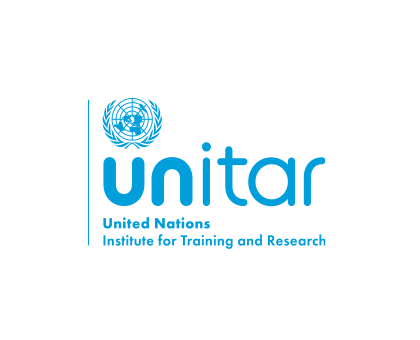
Introduction to Earth Observation (EO) and Geospatial Information Technology (GIT) Applications for Disaster Risk Reduction (Tanzania)
Ministry of Education, Science and Technology
UNITAR-UNOSAT is offering a 1-week introductory 50/50 gender-focused technical training course in the use of Geo-Spatial Information Technology to support operational planning and decision making for Disaster Risk Reduction and Climate Resilience.
Known for its vast wilderness areas, the United Republic of Tanzania is one of the largest and most populous countries in East Africa. The population distribution is extremely uneven within its territory, showing greater cluster population in the northern half of the country and along the east coast[1]. With a climate varying from tropical along the coast to temperate in highlights, Tanzania has witnessed extensive disaster risk associated primarily to weather related hazards such as floods and drought on the rise during the past decade and at a lower scale, from geological hazards such as earthquakes and landslides. This has led grave consequences to the livelihood of individuals as result of their increasing vulnerabilities related to changing climate, weather variability, technological, living, and socioeconomic conditions[2] [3].
Given the potential severity of future effects of disasters in the United Republic of Tanzania, there is an imperative demand to assess the country’s vulnerability, exposure, and coping mechanisms. Geospatial Information Technology (GIT), also called an “enabling technology” due to the benefit it offers across different application domains, can be a very useful tool to support the whole disaster risk management cycle (Prevention/Mitigation, Preparedness, Response and Recovery/Reconstruction) as well as the operational planning and decision making of coherent disaster risk reduction (DRR) activities at both national and local scales. Quantifying level risk of expected future losses is a key step in any disaster risk reduction program. In addition, the outputs and scenarios generated from risk assessments contribute to inform overall risk reduction policies and planning. Risk assessment can be performed by applying geospatial methodologies that allow to quantify risk and identify the locations in need of risk reduction measures. The role of GIT does not stop there; in the immediate aftermath of a disaster, satellite based rapid response analysis enables the emergency response agencies to respond in a better and coordinated way.
[1] The World Factbook 2020. Washington, DC: Central Intelligence Agency, 2020. https://www.cia.gov/library/publications/resources/the-world-factbook/i…
[2] UNDRR Risk Profile, Tanzania. www.riskprofileundrr.org
[3] GFDRR - Think Hazard, Tanzania. http://thinkhazard.org/
- Define and describe the basic concepts and terminology related to Geospatial Information Technology (GIT)
- Apply basic methods and functionalities of GIS software to manage and analyse spatial data
- Identify, search, collect, organize geospatial data/information
- Apply GIS and RS basic concepts, methodologies, and tools for DRR applications
- Explain the advantages and limitations of using geospatial information in DRR
- Undertake the process to create desktop thematic maps to support operational planning and decision making for improved DRR and Climate Resilience
The course will provide selected participants with a theoretical understanding of basic principles of GIS and Remote Sensing (RS), how to search relevant open-source datasets and basic skills for spatial analysis. Participants will also be challenged to solve DRR problems by developing/applying geospatial methodologies.
This is a full-time, face-to-face course with lectures and GIS lab exercises using GIS datasets and real case scenarios (60% lab exercises, 40% lectures and discussions). This course is divided into 5 modules. Each module is structured into 4 sessions of 1.5 hour each. The average workload per week is likely to be around 25-30 hours.
The course will be designed in a way to have a balanced approach between theoretical and practical teaching methods consisting in PowerPoint presentations, live demos, videos, interactive sessions, and GIS lab exercises. A dedicated learning management platform will be set it up by UNOSAT to maximize the learning experience of participants and to provide all required technical backstopping during and after the training.
The course is designed to accommodate female participants from different line ministries involved in DRR/DRM activities with basic or no previous GIS experience.

